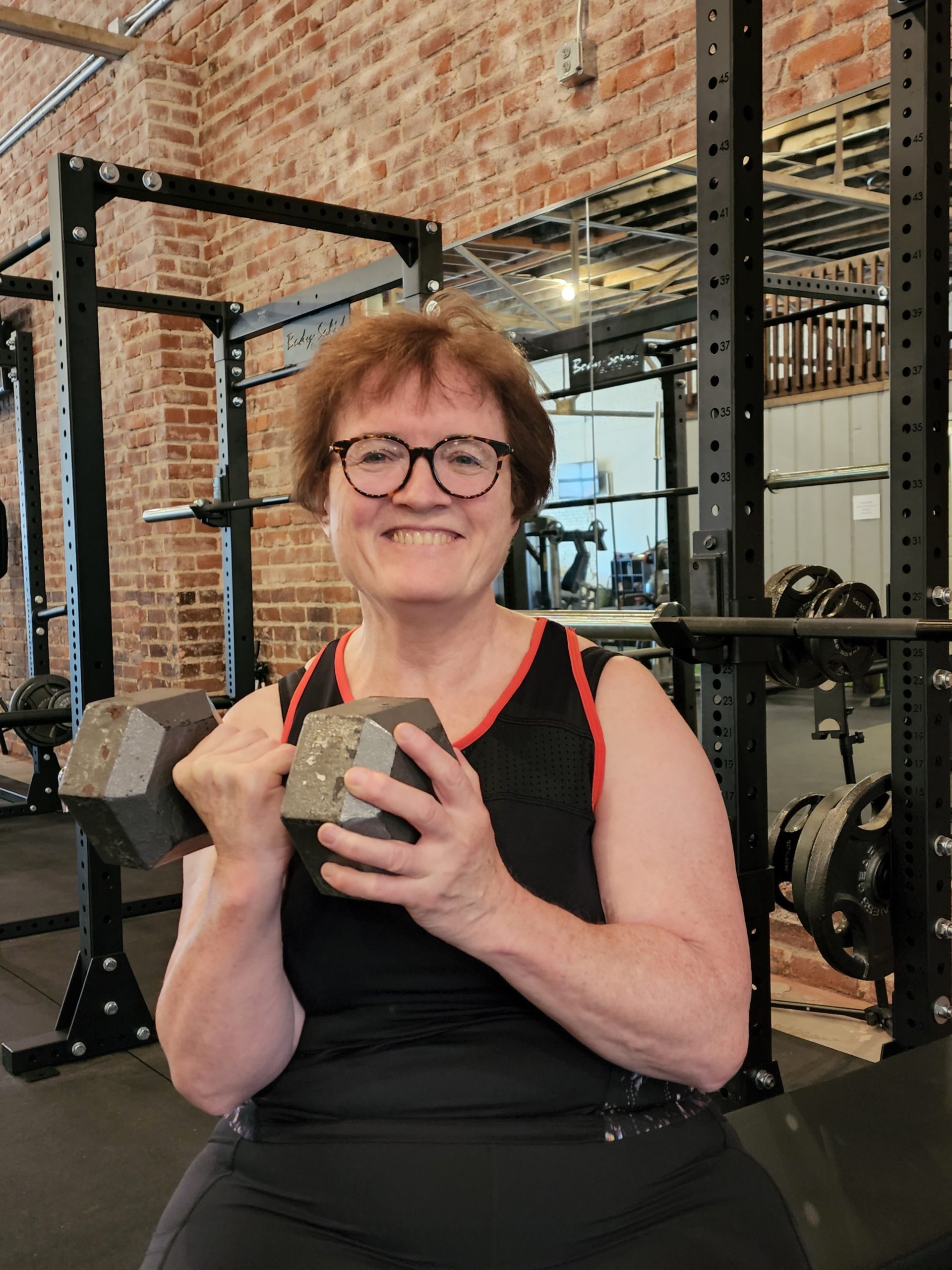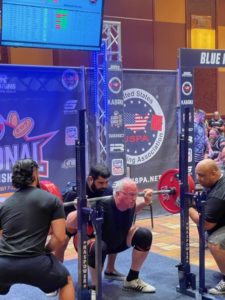When Brian Byers’ wife of 29 years died suddenly in April 2014, he turned to a familiar activity — coaching football — to help work through his grief.
But it wasn’t enough.
“I was at a point where I realized I wasn’t in good shape, so I started losing weight and lifting,” said Byers, who coached football as well as track and field at Wichita East High School from 2006 to 2016. “I taught weights and coached, but I hadn’t lifted since my late 20s.”
He discovered that the more he lifted, the more his health statistics — his blood pressure numbers and cholesterol levels, for example — improved.
His new fitness routine also helped keep away the depression “and dealing with all those things,” he said.
Not long after he started lifting, Byers’ competitive nature kicked in, and at age 61, he started entering powerlifting meets.
The soon-to-be 67-year-old has been racking up powerlifting records on the state, national and world levels ever since.
In December, Byers and another senior record-holding powerlifter from Wichita, Dr. Rachel Brown, plan to participate in the two-day USA Powerlifting’s Kansas state meet, at Compelled Fitness and Nutrition, 9223 W. Kellogg Drive. Spectator admission is $10. The two are scheduled to compete Saturday, Dec. 10.
Sidelines to weight room
For Byers, losing his wife was hard. Deborah, who had been the financial aid director at Wichita State University, died a week before the couple’s daughter was to be married. While she had been diagnosed with cardiomyopathy, a weakening of the heart muscle, she hadn’t been unwell, so the death was unexpected.
After Byers left his East High job in 2016, he became an assistant coach at Friends University for a few seasons.
This past fall was the first time in 42 years that Byers, a former player for the Pittsburg State University Gorillas, wasn’t on the gridiron sidelines.
Now that he doesn’t have any coaching commitments, Byers is spending more time competing than he has in previous years when he averaged about three competitions a year. The December competition will mark his sixth this year. In July, he competed in another lifting association’s national meet in Las Vegas.
As of early November, Byers’ record tally included eight national records and one world record with the U.S. Powerlifting Association, America’s largest federation of lifters, and more than 15 state records with the USPA and USA Powerlifting combined. He was scheduled to compete in an USPA meet in Oklahoma City on Nov. 19 (after this issue of The Active Age went to print), where he hoped to set additional world records.
“I’m trying to chase records,” Byers said of his active competition schedule this year. He usually competes in the 243-275 pounds weight category.
Among his records: lifting 530 pounds in the deadlift, 425 pounds in the squat and 342 pounds in the bench.
He lifts more weight in squats than he did as a college football player, he said, and feels he’s in better shape than when he was 40.
Because of his background in athletics, Byers develops his own workout program and lifts three times a week at the Northwest YMCA and also sometimes at his home gym since he acquired more equipment during the pandemic.
Matters of mind and body
Like Byers, Brown, who turns 66 in January, was a later-in-life entrant into competitive powerlifting.
She was 57 and an administrator with the University of Missouri’s medical school when she joined a group of women lifters in Columbia, Mo.
In 2018, Brown moved to Wichita to lead the psychiatry and behavioral sciences department at the University of Kansas School of Medicine-Wichita. The December competition will be the third she’s entered since moving to Kansas, although she’s continued to lift for the health benefits.
“I’ve always done something,” Brown said of staying active. She progressed from playing field hockey as a teen growing up in the United Kingdom to working out with Jane Fonda aerobics videos to taking martial arts classes in her 30s. By her early 50s, she’d earned two black belts.
She modestly downplays the fact that she holds Kansas powerlifting records for her age and weight class.
“There were no records before,” said Brown, who will be competing in the 65-69 age class at likely 181 pounds in December.
But there still is a sense of pride in being able to do what she does.
“Most women my age aren’t expected to be strong, so it’s very satisfying,” said Brown. The most she’s lifted is 250 pounds in squat, 143 in bench and 308 in the deadlift.
“Most of my successes are on the professional level, so it’s nice to have something else I love that I’m good at,” she added.
For Brown — who spends about 50 hours a week at KU School of Medicine-Wichita job, which also includes seeing patients as one of the area’s few child and adolescent psychiatrists — lifting workouts are a good way to destress.Brown prefers to use a trainer to develop her workout program.
Health benefits
While Byer’s and Brown’s workouts have helped them achieve record-setting results, their fitness routines are also a good way to counter the effects of aging, both said.
Muscle mass starts decreasing after the age of 30 and the rate of decline is even higher after the age of 60, according to the National Institutes of Health.
More importantly, according to Jeremy Stallbaumer, a former spine surgeon who owns The Exercise Coach in Wichita, they are countering the loss of fast-twitch muscles. Our bodies are made up of primarily two types of muscles, slow-twitch and fast-twitch, and it’s well-researched that one loses the ability of fast-twitch muscles as one ages.
Weight and strength training is the best way to build up and maintain the fast-twitch muscles, which are the muscles that can react quickly and “kick in fast” if you trip or become unsteady, for example, said Stallbaumer.
Weight training also helps build bone density, countering the effects of osteopenia and osteoporosis that make bones more brittle.
Before beginning a new exercise program, individuals should consult their physician. According to the American College of Sports Medicine guidelines, this is particularly important for anyone who doesn’t exercise regularly and has certain medical conditions, such as heart issues.
Both Byers and Brown recommend that seniors who want to take up strength or weight training should find a trainer and not let themselves be intimidated or daunted by the prospect of starting such a program.
“Don’t be afraid to try it,” Byers said.
“You’re only competing with yourself to be better,” said Brown.
Contact Amy Geiszler-Jones at Algj64@sbcglobal.net.










